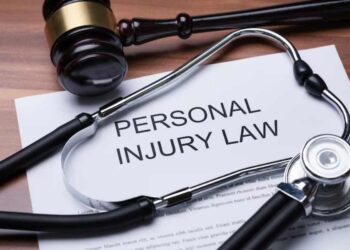Just imagine a scenario on the construction site.
A worker who is operating heavy machinery unfortunately hits a passerby, resulting in serious injuries. In this situation, according to respondeat superior, the employer of the construction company can be held accountable for the harm caused as the worker’s action was unintentional. Under this respondeat superior, employers are legally liable for the negligent acts of their workers during working hours. If the employers fail to provide proper training to the workers or are negligent in hiring, it makes the employers responsible for their actions.
If you are ready to pursue a personal injury claim, then it is necessary to know more about respondeat superior. With the assistance of the personal injury attorneys from Alexander Law Group, LLP, or other reputed law firms, victims can improve their chances of acquiring fair compensation. In this blog post, we are going to discuss respondeat superior, and how it works in personal injury cases.
What is Respondeat Superior?
Respondeat superior is a legal term that holds employers liable for the actions of their staff members while they are on the job. It is derived from the Latin term meaning “let the master answer.” It is a type of vicarious liability. When respondeat superior is applied, the victim can sue the employer of the person who caused the accident that caused damages.
How Does Respondeat Superior Work?
Respondeat superior doesn’t apply in all situations. For instance, if the employee was on their day off when the accident happened, then respondeat superior doesn’t apply. However, if the employee was performing a job-related duty while the accident happened, then the employer will be answerable for the employee’s actions. This is valid grounds for respondeat superior.
You need to prove that the employer failed to provide proper training and guidance to their employees. To claim compensation, you need to prove that:
- There is an employer-employee relationship
- The negligent person was performing a job-related duty when the accident happened
- The activities of the employee were beneficial to the employer
Here are some examples of how respondeat superior works:
Medical Malpractice
As a patient, if you were injured due to the negligence of the surgeon during surgery, then the hospital can be held responsible for the negligence of the surgeon. This is because the negligence occurred when the surgeon was performing a job-related duty.
Company Vehicle
If a delivery driver causes an accident that results in serious physical and property damage, then the driver’s employer can be held responsible for the losses. It is important to note that the driver must have been performing a job-related duty when the accident happened for respondeat superior to be applicable.
Retail Stores
An employee at a retail store negligently spills liquid on the floor. It leads to one of the patrons slipping and falling and hurting themselves. In this situation, the store owner can be held responsible for the negligence of the employee as the incident occurred during working hours. In all the above situations, the employer is liable for the employee’s actions under the respondeat superior rule. By suing the employee, the victim can recover compensation for their injuries and damages.
Final Thoughts
Most victims are unaware of the respondeat superior doctrine. It ensures that employers are held liable for their employees’ actions. Understanding this doctrine is necessary when pursuing a personal injury case. Remember that if you’ve sustained harm due to someone else’s negligence, then it is always better to consult an experienced personal injury lawyer who can guide you through your various legal options. They know how to apply this respondeat superior and other doctrines, depending on your case.










